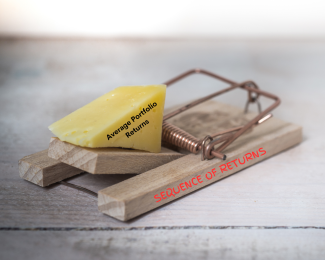
Avoid the Sequence of Returns Trap: 4 Strategies to Protect Your Retirement
Investing for the future is a wise decision, but it's not without risks. One of the biggest risks that investors face in retirement is known as sequence of returns risk. This risk refers to the order in which investment returns are received, which can have a significant impact on the overall performance of an investment portfolio.
What is Sequence of Returns Risk?
Sequence of returns risk is the risk that comes from experiencing negative returns in the early years of retirement or during a period of heavy withdrawals from an investment portfolio. This risk can have a devastating impact on the value of the portfolio, as losses in the early years of retirement can significantly reduce the total value of the portfolio. This results in lower retirement income, greater income insecurity, and fewer assets passed to beneficiaries.
To understand the concept of sequence of returns risk, let's look at a simplified example. Imagine two investors, John and Jane, who retire at age 65 with a $1 million portfolio and want and income of $40,000. John experiences a sequence of returns where his portfolio loses 20% in the first year, then gains 10% in the second year. Jane, on the other hand, experiences a sequence of returns where her portfolio gains 10% in the first year, then loses 20% in the second year.
Even though John and Jane have the same average return over those two years, John's portfolio is worth $796,000 at the end of the second year, while Jane's portfolio is worth $808,000. This is because John experienced a loss in the first year of his retirement, meaning his withdraw impacted his portfolio’s ability to recover in second year.
Compounding these impacts over a 25- to 30-year retirement could have significant consequences on your retirement outcome.
How do You Mitigate Sequence of Returns Risk?
Let's look at four strategies to help protect your retirement
Dynamic Withdrawal Strategies
Fortunately, there are steps that you can take to mitigate sequence of returns risk. One strategy is to use a dynamic withdrawal strategy. Rather than withdrawing a fixed percentage or amount of your portfolio each year, you adjust your withdrawals based on the performance of your portfolio. When the portfolio performs well, you withdraw a larger amount, and when the portfolio performs poorly, you withdraw less. But most retirees can’t afford to stop all withdrawals when their portfolio is down.
Portfolio Diversification
Another strategy is to diversify your portfolio across multiple asset classes, such as stocks, bonds, and real estate. By diversifying your portfolio, you can reduce your exposure to the risk of any one asset class. The risk could still impact you if most or all your asset classes are experiencing losses at the same time.
Buffer Asset
To further mitigate the risk, you can add a buffer asset to your investment portfolio. A buffer asset is an account that that is has guarantees against losses. A buffer asset could be cash, CDs, fixed/indexed annuities, or cash value life insurance. The idea is that if the rest of the portfolio experiences a significant loss, the buffer asset can be used to provide income during those times, preventing you from having to sell assets in the portfolio at a loss.
Combining Strategies
Combining strategies may give you the best outcome. For example, you can use immediate annuities to create a guaranteed income stream to cover fundamental expenses during retirement. An immediate annuity is a contract between you and an insurance company, where you give the insurance company a lump sum payment in exchange for a guaranteed income stream for a certain period or the rest of your life. Income from the annuity is guaranteed and, therefore, not subjected to sequence of returns risk. This concept combines well with the dynamic withdrawal strategy. Your needs are covered with guaranteed income and your wants can be flexible in timing and amount. A well-diversified portfolio can reduce the risk further.
In conclusion, sequence of returns risk is a significant risk that retirees face during retirement. However, by diversifying your portfolio, using a dynamic withdrawal strategy, and considering financial products such as annuities, you can reduce their exposure to this risk and enjoy a more secure retirement.

